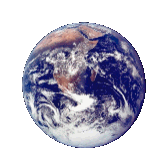|
| February 17, 2010 |
| |
Carbon Sequestration in North American Peatlands, Clarence Lehman, Department of Ecology, Evolution and Behavior |
| |
|
Peatlands store large amounts of carbon and may play a role in the glacial cycles. |
| |
Download slides (pdf) |
| February 24, 2010 |
| |
A tip of the iceberg: A report on a simple model with bifurcation phenomena
in the Arctic sea ice, Esther Widiasih, School of Mathematics |
| |
|
I will report on the recent paper by Eisenman and Wettlaufer (2009),
"Nonlinear threshold behavior during the loss of Arctic sea ice". This
paper studies central physical processes associated with transition from
ice covered to ice free Arctic ocean conditions. Here the authors focus on
an energy balance model consists of one
dimensional ordinary differential equation. The model incorporates ice
albedo feedback, seasonally varying energy fluxes and an imposed surface
heat flux associated with a warming climate. The study finds that in a
warmer climate, a tipping point associated with sudden disappearance of
wintertime only sea ice cover is possible. |
| |
|
| March 24, 2010 |
| |
Quantifying the carbon footprint of an urban biomass incinerator, John Zobitz, Augsburg College |
| |
|
How much land is needed to offset industrial CO2 emissions? Answering this question is one way
to determine a carbon footprint, as the reserved land will hopefully be a net sink of carbon
dioxide to the atmosphere, thereby balancing industrial emissions. I will outline approaches to
determine the carbon footprint for a proposed biomass incinerator between Minneapolis and Saint
Paul. Results were student-generated from a service learning project integrated into the
curriculum of an undergraduate differential equations course. Mathematical models were developed
and analyzed to examine the local contribution of emissions to the atmosphere and the extent of
land needed to offset incinerator emissions both in the short (daily) and long (yearly) term.
Qualitative results show the sensitivity of atmospheric carbon content to the incinerator output
rating, area and type of land dedicated for offsets, and atmospheric wind speed. The incinerator's
carbon footprint, or the area of land needed to offset emissions, is approximately the size of
Saint Paul. I will also highlight how this land requirement changes when other factors (e.g. air
quality effects from incineration) are taken into consideration.
Reference
|
| |
|
| March 31, 2010 |
| |
The Future of Ice Sheets, Esther Widiasih, School of Mathematics |
| |
|
The paper, "The future of ice sheets and sea ice: Between
reversible retreat and unstoppable loss," by Dirk Notz, will be discussed.
Reference (cached copy)
|
| |
|
| April 14, 2010 |
| |
Rapid Sea Level Rise, Richard Barnes, University of Minnesota |
| |
|
The paper, "Sea-Level Highstand 81,000 Years Ago in Mallorca," by Jeffrey Dorale, et al., will be discussed.
Reference (DOI: 10.1126/science.1181725)
|
| |
Download slides (pdf) |
| April 21, 2010 |
| |
Myth busting: Burning Peatlands.
Will climate change cause peatlands to dry out and catch fire expelling large amounts of
carbon into the atmosphere?
Samantha Oestreicher, School of Mathematics |
| |
|
Abstract:
Peatlands store an estimated 455Pg of carbon. This is roughly one third of the terrestrial carbon
pool. If the peatlands were to catch fire, then much of that carbon would rapidly return to the atmosphere. Given our run-away carbon levels, the idea of returning more carbon to the atmosphere is unpleasant at best.
Accessible to everyone, this talk will take some time to explore the science of climate. We'll
use predictions given by IPPC & SAP and a simple model to generate the predicted climate in
Northern Minnesota. Using another simple model, we'll look at the water budget of the peatlands
to see if they dry up or not. (And there is a LOT of water in the peatlands, so it's reasonable
to think they might not!) Finally I will survey several recent papers by Jason Keller, Scott
Bridgham and Joon Kim to determine how the peat will react to these changes to see if the
peatlands really could catch fire. |
| |
|
| April 28, 2010 |
| |
Rapid Sea Level Rise II, Richard Barnes, University of Minnesota |
| |
|
The paper, "The Last Glacial Maximum," by Peter Clark, et al., will be discussed.
Reference Science 325, 710 (2009) (DOI: 10.1126/science.1172873) |
| |
|
| May 5, 2010 |
| |
Ravid vs. Goliath: Curve Fitting vs. Global Circulation Models predictions
of Minnesota climate trend, Esther Widiasih & Xiao Xiao, School of Mathematics |
| |
|
Abstract:
There is a unique ecological phenomenon in Minnesota, called the triple
point of the North American ecosystems. This is the meeting point of the
northern borealis forest, the western prairie, and the eastern deciduous
forest. Some recent papers suggest that this point is moving north due to
global warming.
The climate parameters that influence the location of the triple point are
the total annual precipitation and the annual mean temperature. In this
talk we will show some results from our current work in comparing the
trajectories of some climate parameters in Minnesota. We compare two sets
of data, namely that obtained from Global Circulation Models and that of
observation data, collected by the US Historical Climate Network.
The GCM prediction is a result of massive work by climate scientists,
involving PDE's, using Goliath size computational power. The curve fitting
method, on the other hand, uses linear algebra, Matlab and a laptop.
Nonetheless, both predict the northward trend of the triple point.
|
| |
|
|
